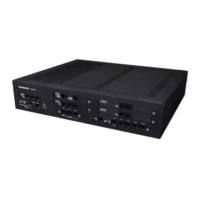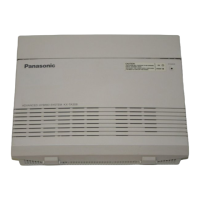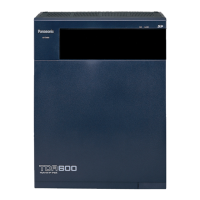Operating Manual References
2.1.1 Dial Tone Transfer
5.1.7 DID (Direct Inward Dialing)
Description
Directs
a call on a public CO line assigned as a Direct Inward Dialing (DID) line to a preprogrammed destination
according to the call’s DID number, which is based on the telephone number dialed by the caller. When a call
reaches its destination via DID distribution, the DID name will be displayed on the proprietary telephone (PT),
allowing extension users to easily see whom a call is directed to. Each DID number has a destination for each
time mode.
DID distribution allows you to use your telephone numbers for specific purposes. For example, you can direct
calls from customers’ fax machines to your office fax machine automatically, or allow your overseas customers
to be automatically connected to specific operators. Incoming calls with DID numbers that match extension
numbers at this PBX will be sent to the corresponding extension. Incoming calls with DID numbers that match
extensions at other PBXs or CO line access numbers will be sent to the corresponding TIE line or CO line.
[Method Flowchart]
Yes
Yes
No
Does the call have Caller ID
information and is CLI distribution
enabled for the DID number in the
current time mode?
No
Has the caller
been stored in the System Speed
Dialing Table and has a CLI destination
been assigned?
The call is routed to the
DID destination.
The call is routed to its
CLI destination.
No
Yes
Is the DID number found in
the DID Table?
Yes
Is a DID destination assigned
for the current time mode?
No
The call is routed to an
operator (Intercept
Routing—No Destination).
A CO line call is received on a DID line.
Does the DID
number match an
extension number?
Yes
The call is routed
to the extension.
Does the DID
number match an extension
number at another PBX or CO
Line Access no.?
Yes
The call is routed
to the TIE line or
CO line.
No
No
94 Feature Manual Document Version 2016-03
5.1.7 DID (Direct Inward Dialing)

